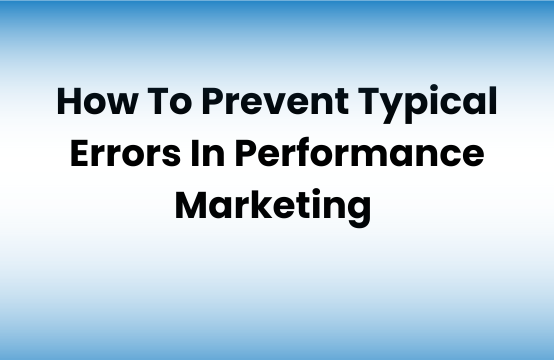Performance marketing is a cost-effective approach that can help startups and small businesses maximize their return on investment (ROI). By focusing on measurable outcomes, such as clicks, conversions, and sales, performance marketing ensures that every dollar spent drives results. Here’s how you can implement performance marketing strategies on a budget.
Key Components of Performance Marketing
- Pay-Per-Click (PPC) Advertising: Advertising that charges a fee each time an ad is clicked is known as pay-per-click (PPC) advertising. Among the well-known platforms are Bing Ads and Google Ads.
- Affiliate Marketing: Businesses pay affiliates a commission for driving traffic or sales through their marketing efforts.
- Social Media Advertising: Platforms like Facebook, Instagram, and LinkedIn offer cost-effective advertising options with detailed targeting capabilities.
- Email Marketing: Sending targeted emails to prospects and customers to drive engagement and sales.
Budget-Friendly Performance Marketing Strategies
1. Define Clear Goals
- Start by defining your marketing objectives. Having specific objectives can help you concentrate your efforts and gauge success, whether your goal is to increase website traffic, generate leads, or increase sales.
2. Leverage Free Tools and Resources
- Use free marketing tools to get started. Google Analytics, for instance, helps you track and analyze website traffic. Social media platforms provide insights and analytics to measure your performance.
3. Focus on High-Impact Channels
- Identify the channels that offer the highest ROI for your business. For many startups and small businesses, this could be social media advertising or email marketing. Allocate your budget to these high-impact channels.
4. Implement Cost-Effective PPC Campaigns
- Set up PPC campaigns on a small budget by targeting long-tail keywords, which are less competitive and more affordable. Monitor and adjust your bids and targeting to optimize performance.
5. Use Retargeting
- Retargeting ads can help you reach users who have previously interacted with your website or content. These ads are typically more cost-effective and have higher conversion rates.
6. Collaborate with Influencers and Affiliates
- Partner with influencers and affiliates who align with your brand. They can help promote your products or services to a broader audience on a performance-based model, ensuring you pay only for results.
7. Create Valuable Content
- Take the time to produce insightful material that appeals to your intended audience. Blog posts, how-to guides, and videos can drive organic traffic and build brand awareness without significant expenditure.
8. Optimize Your Landing Pages
- Ensure your landing pages are optimized for conversions. A well-designed landing page with a clear CTA can significantly improve your conversion rates, maximizing the value of your paid traffic.
Best Practices for Performance Marketing on a Budget
- Test and Optimize: Continuously test different ad creatives, targeting options, and marketing channels.
- Monitor Your Analytics: Keep a close eye on your performance metrics. Regularly review your campaigns’ performance to identify areas for improvement.
- Set Realistic Budgets: Start with a small budget and scale up as you see positive results. This approach minimizes risk and allows you to allocate funds more effectively.
- Build Relationships: Foster strong relationships with your affiliates and influencers. A good partnership can lead to more effective promotions and better results.
Do read our latest blogs on What is A/B Testing? & How to perform A/B Test | Step By Step Guide & How To Become A Meta Ad Specialist in 2024| Step By Step Guide








